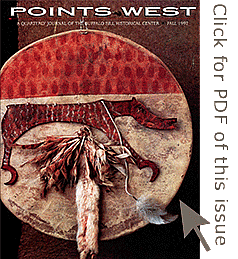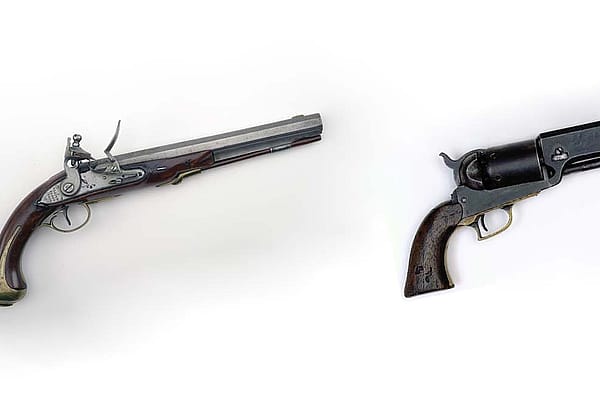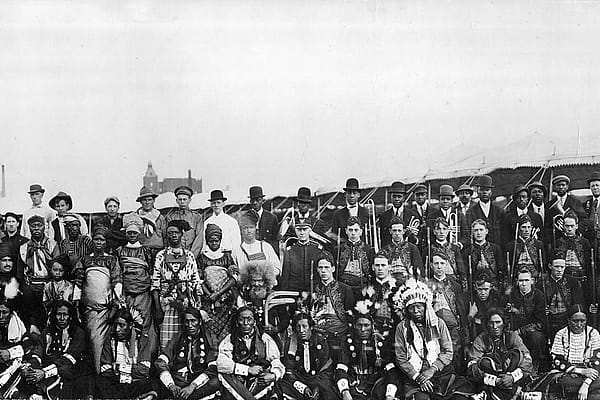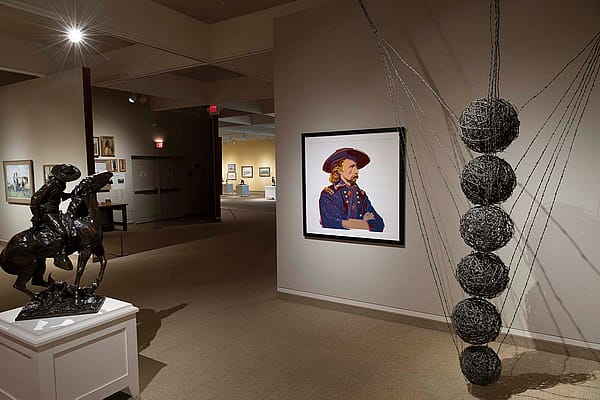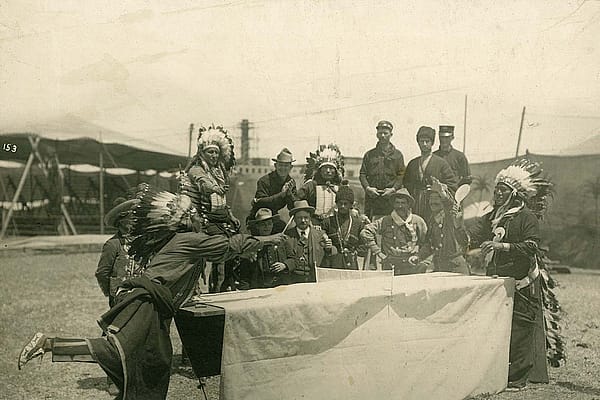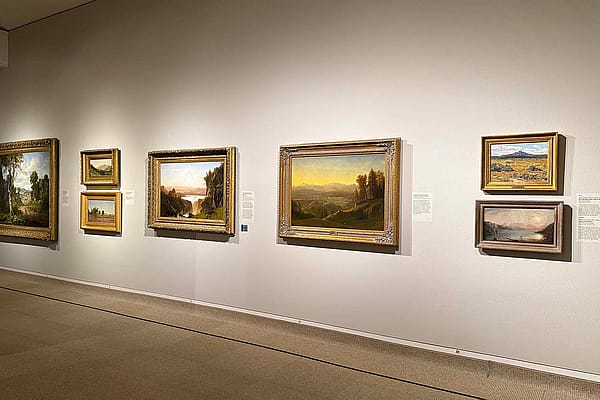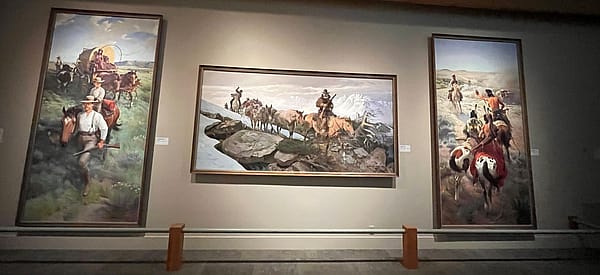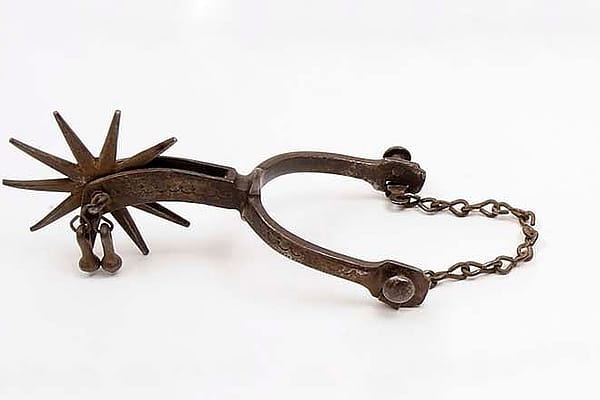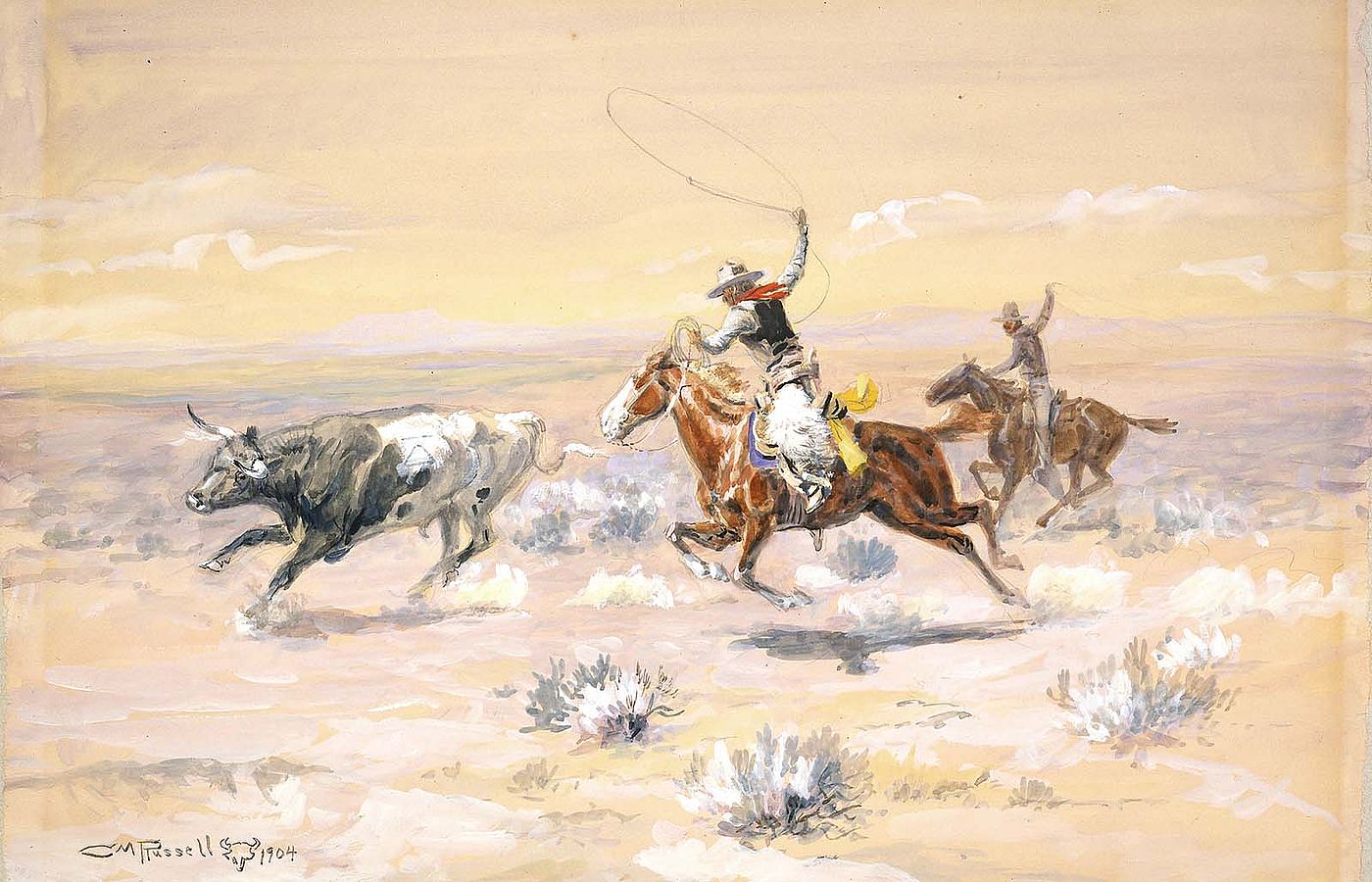
Remington and Russell present the Mythic Cowboy – Points West Online
Originally published in Points West magazine
Fall 1997
Remington and Russell present the Mythic Cowboy
By Ann Reynolds Crowell
Guest Author
Charles Marion Russell and Frederic Sackrider Remington are widely recognized purveyors of the cowboy myth in western art. Two selections from the treasure trove of the Whitney Western Art Museum present their very personal interpretations of the cowboy. Each can be explored for information explaining the men and the evolution of the myth.
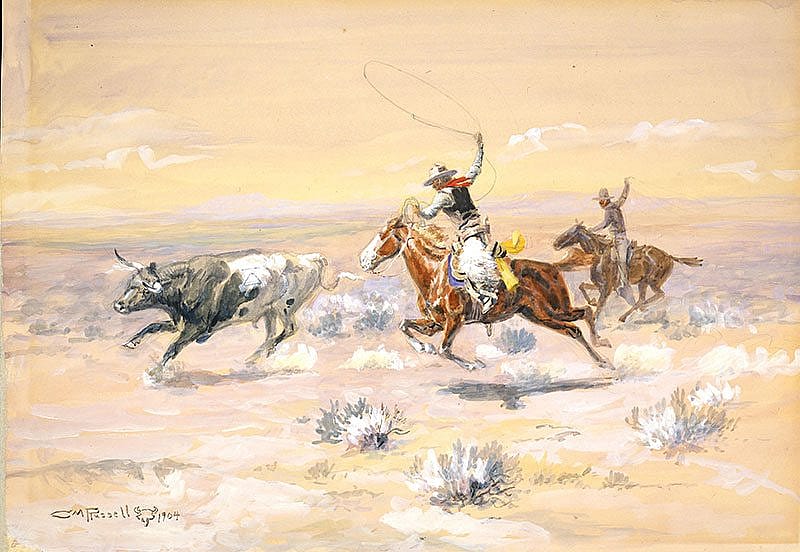
In the first example, Charles M. Russell presents Cowboys from the Bar Triangle, 1904, watercolor on paper, (Gift of William E. Weiss). We see three elements, a cowboy galloping on his horse, an errant steer and the “shadow” of another cowhand. With a red scarf, blue saddle blanket and yellow slicker, Russell uses primary colors to define the central character and draw attention to the action. Action is essential to Russell’s cowboy interpretation. Like a single frame plucked from a film reel we are brought into the moment. The scarf trailing, the position of the horse’s legs and the little clouds of dust attest to the cowboy’s swift movement. The second cowboy plays a supporting role: he is alluded to using a gray scale palette.
Notice the nebulous background. This lack of “atmosphere” intensifies the action, lends an air of anonymity, and displays the vastness of place. Man against nature, man against beast and man defining himself in a wilderness moment—Russell explains it all. As a young man he had chosen the cowboy life. He authenticated cowboy culture through his art.
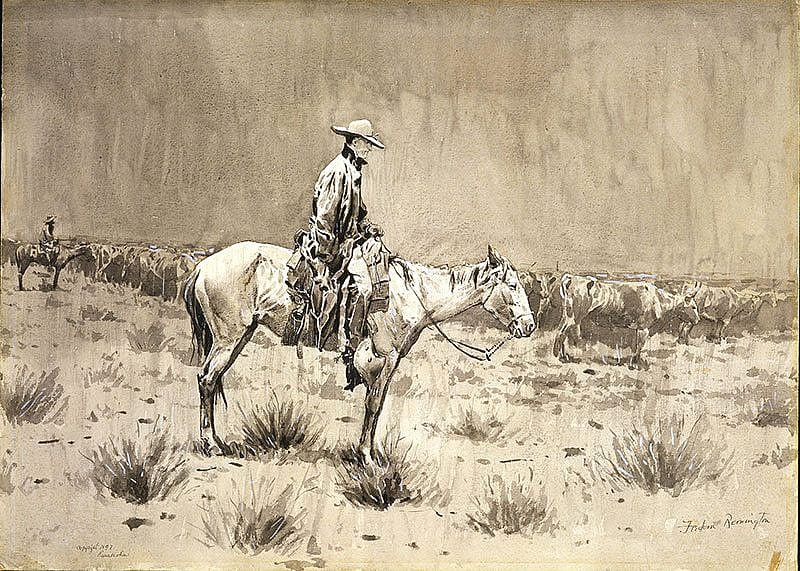
Our second example, Riding Herd in the Rain, ca. 1897, ink wash on watercolor board, (Gift of the Hon. C.V. Whitney), presented by Frederic Remington, exhibits another aspect of cowboy life—the mean drudgery. Astride his horse a cowboy contemplates the cattle herd. Sheets of rain fall with no relief in sight. The gray palette reinforces their doleful situation. Note the determined set of the rider’s jaw. The somber color and attitude imply nothing flamboyant or exotic about this man. He rides for the brand no matter the circumstance. Like the medieval knight he understands his duty, respects loyalty and endures hardship.
His repose permits inspection of his costume. The broad-brimmed hat, slicker, chaps, saddle, and tapaderos provide a familiar illustration of traditional cowboy gear. Who else but a cowboy would use these exotic “tools?” His hat deflects raindrops. The chaps indicate he works in heavy brush. Taps, modeled after Spanish tapaderos, suppose he owned an old saddle or works the Texas brush country. Remington’s passionate nature found a quarter in these “…men with bark on them…” He preserved the hero image on paper, on canvas and in bronze.
Charles M. Russell interpreted the cowboy by bringing to life recollections from his own past. Frederic Remington interpreted the cowboy by amalgamating eastern impressions and cowboy life in an engaging approach. Whether in two dimensions, three dimensions, or in the written word, Russell and Remington interpreted the cowboy in an heroic attitude. This consistency of their personal renderings helped to establish the cowboy as an American hero. Popular cowboy dime novels are now museum pieces and cowboy movies wax and wane, yet the artistic representations of Russell and Remington still remain.
About the author
Ann Reynolds Crowell was a student in the Center’s Larom Summer Institute in Western American Studies in 1997. She is a graduate of Salem College.
Post 014
Written By
Nancy McClure
Nancy now does Grants & Foundations Relations for the Center of the West's Development Department, but was formerly the Content Producer for the Center's Public Relations Department, where her work included writing and updating website content, publicizing events, copy editing, working with images, and producing the e-newsletter Western Wire. Her current job is seeking and applying for funding from government grants and private foundations. In her spare time, Nancy enjoys photography, reading, flower gardening, and playing the flute.
